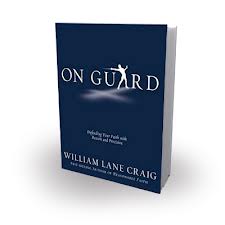The current evangelical seems obsessed with social justice. The older evangelical, intent on doctrinal tidiness. What is the appropriate posture toward culture? Should we be friends, foes, intimates, or radicals?
20th Century Evangelicals: From Enemies to Friends
In an article entitled “Where We Are and How We Got Here?†noted historian Mark Noll demonstrates the absence of significant evangelical thought and action in the first half of the 20th century.[1] White American evangelicals abandoned serious engagement with academia, popular culture, and politics. The in-house fundamentalist-modernist controversy left fundamentalist Christians disconnected and quarantined from the ideas of the universities, the burgeoning impact of television, and civil rights legislature. We were enemies of culture.
The second half of the 20th century presented a new evangelical—concerned, engaged, and actively influencing the world. A friend to culture. Noll notes two key developments that contributed to a shift in evangelical posture towards culture. First, immigration reform led to an influx of de-Europeanized Christians, bolstering evangelical numbers. Second, the civil rights movement was launched from the southern African American evangelical church. As a result, American evangelicalism grew in number and influence. Subsequently, three culturally reforming movements followed—volunteer organizations (Young Life, Campus Crusade, Fuller Seminary), charismatic movements, and the Jesus People (Calvary Chapel).
The Jesus People rode the church and culture pendulum from enemy to friend. Without quarantining themselves from hippy fads and music all together, the Jesus People found a way to live out a contextualized 70’s gospel. They didn’t demonize culture. Noll comments: “From the 1920s to the 1950s, American evangelicals had tended to view popular culture as an enemy—to keep the gospel it was necessary to flee the world. In the late 1960s, the Jesus People treated popular culture as a potential friend—to spread the gospel it was necessary to use what the world offered.â€
New Evangelicals: Intimates to Radicals
However, the latter thirty years of the 20th century did not chart a delicate course between cultural extremes. Leaping quickly from “enemy†and over “friend,†Evangelicals soon found themselves in bed with cultural compromise. I am shocked by what is considered normative media consumption for this Christian generation. They seem to check their morality at the door of the theatre. I am impressed with the new evangelical deeply concerned for the poor and the marginalized. Sexual ethics seem to be up for grabs, while sex-trafficking is anathema. Freedom to engage the culture goes hand in hand with devotion to inconsistent church participation.
The new evangelical appears to be obsessed with social justice, dismissive of doctrine, technologically baked, and so culturally integrated that the Christians look like loosely organized non-profits. Where is the witness of the church? Syncretism has crippled the church’s witness with Christians and secularists alike. What do we stand for again? Many of the new evangelicals are so un-informed that they confuse the term “evangelical” for “evangelistic, and they want little to with that.
In the latter 20th century, and into the first two decades of the 21st century, ecclesiology was uncritically integrated with business models, discipleship radically individualized, the pulpit turned into a therapeutic platform, and the mission of the church reduced to relevance or social justice. The result is a de-churched generation whose faith has been characterized as moralistic therapeutic Deism at best. This vacuous Christianity lacks appeal to thoughtful onlookers. The emerging evangelicalism seems to take on various dispositions to culture, depending on the issue at hand–friend, foe, radical activist, and unnoticeable intimate. If this cultural savvy or spineless indecision?
Future Evangelicals: To Change the World?
Will the early 21st century continue on in confusion or will we chart a different course? The “gospel-centered” movement seems to be re-centering church around a holistic gospel that addresses personal, communal and cultural life in recognition of Jesus as Christ and Lord. Church planters get a whiff of this theology and off they go to plant a church, meanwhile, they make Sunday attendance, numbers of groups, missional theology, philosophy of ministry, and podcast downloads the measure of success. I’m afraid we’re birthing a bunch of church planters who weren’t first elders with hearts beating for the flock of God. Pastors are more concerned with “platform” than piety. I’m concerned we’ve launched Christian radicals, independent of the church, as the poster-kids of the new generation of evangelicals–who love Jesus’ mission more than his Body and maybe even Christ himself. Should we be out changing the whole world?
That’s the question posed by James Davidson Hunter, “Can or should Christians change the world?†In 1947 Carl F. Henry castigated the fundamentalist gospel: “Whereas once the redemptive gospel was a world-changing message, now it was narrowed to a world-resisting message…â€[2] Is a gospel shaped church meant to be world-changing or world-resisting? Perhaps our perspective is too broad, taking the need of the global forest while neglecting the local trees. Hunter suggests the way forward should be patterned after Jesus, who provides an example of “faithful presence” in his time and culture. It is remarkable that Jesus did not travel the world to spread his message; he did not awaken his disciple’s attention to global justice issues, though his gospel message certainly holds the whole globe in view. Is faithful presence, locally engaged mission, the way forward? If so, what postures should we accept? Leslie Newbigin once said that the church should be both for and against the world. Do we accept this, and are we willing to embrace both the cost and theo opportunity? These are important questions that will affect our children and their experience of church. For now, our country watches as we steward our historical and cultural moment. We have a rare opportunity to reshape, or perhaps, recover evangelicalism.
[1] Mark Noll, “Where We Are and How We Got Here?†Sept 29, 2006, Christianity Today. See also George Marsden, Understanding Fundamentalism and Evangelicalism (Grand Rapids: Eerdmans, 1991).
[2] Cited in David Bosch, Transforming Mission (Maryknoll: Orbis, 1991, rep. 2003).


